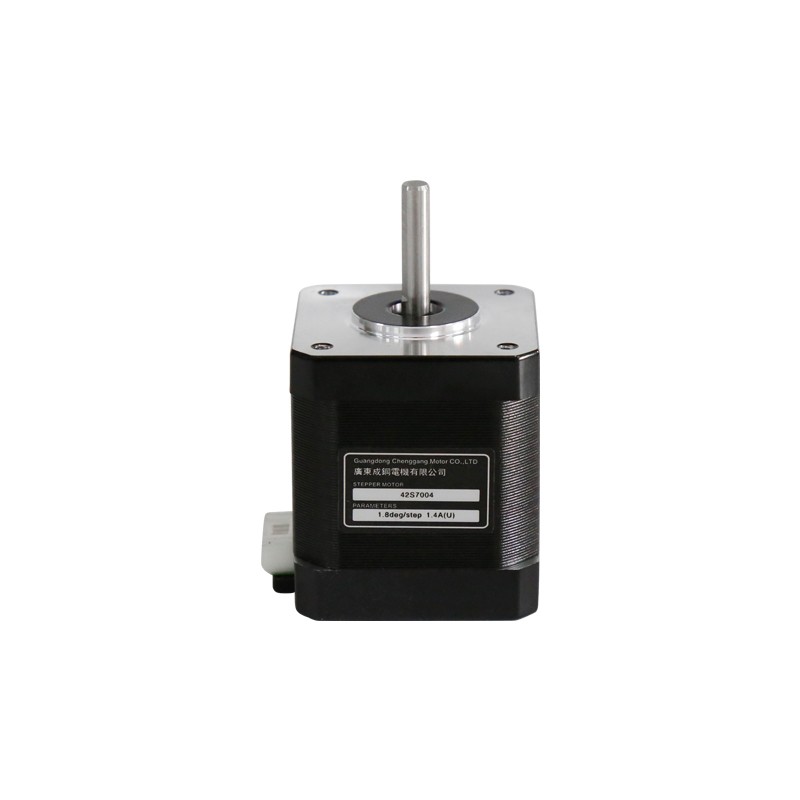Source:Industry News Release time:2022-07-15 Clicks: Popular:Reduction motor manufacturer

When choosing the model of a stepper motor, you can follow the steps below to avoid the trouble caused by improper selection. Details below are for reference only.
1. Selection of stepper motor torque
The holding torque of a stepper motor is similar to what is called "power" of a conventional motor. Of course, there are also essential differences. The physical structure of stepper motors is completely different from AC and DC motors, and the output power of the motor is variable. Which type of motor is usually chosen based on the required torque (that is, the torque of the object being driven). Roughly speaking, if the torque is below 0.8N.m, choose 20, 28, 35, 39, 42 (diameter or right angle of the motor body, unit: mm); if the torque is around 1N.m, it is more appropriate to choose a 57 motor. When the torque is above a few N.m, you need to choose a stepper motor with specifications such as 86, 110, and 130.
2. Selection of stepper motor speed
Special consideration should also be given to the speed of the motor. Because the output torque of the motor is inversely proportional to the speed. In other words, the stepper motor has a small torque when rotating at low speed (a few hundred revolutions per minute or lower, the output torque is large) and at high speed (1000 rpm-9000 rpm). Of course, some working conditions require high-speed motors, so the coil resistance, inductance and other indicators of the stepper motor need to be measured. Choose a motor with a slightly smaller inductance. As a high-speed motor, you can get a larger output torque. On the contrary, when low speed and high torque are required, it is best to choose an inductor with an inductance of ten or tens of mH and a larger resistance.
3. Selection of no-load starting frequency of stepper motor
The no-load starting frequency of a stepper motor is often called the "no-load frequency". This is an important indicator when purchasing a motor. If frequent instantaneous starts and stops are required and the speed is around 1,000 rpm (or higher), "accelerated start" is usually required. If direct start is required to achieve high-speed operation, it is best to choose a reactive or permanent magnet motor. The "idle frequency" of these motors is relatively high.
4. Phase selection of stepper motor
Many customers rarely pay attention to the selection of the number of phases of stepper motors, and most of them buy them casually. In fact, motors with different phases have different working effects. The greater the number of phases, the smaller the step angle and the smaller the vibration during operation. In most cases, two-phase motors are more often used. In a high-speed and high-torque working environment, it is more practical to choose a three-phase stepper motor.
5. Select according to the usage environment of the stepper motor.
Special stepper motors are waterproof and oil-proof and are used in some special occasions. For example, underwater robots need water discharge motors. For special-purpose motors, targeted selection is required.
6. Do you need special specifications according to your actual situation?
For stepper motors with special specifications, please communicate with us and we will process and order them within the technical scope. For example, the diameter, length and direction of extension of the shaft.
7. If necessary, it is best to further communicate with the manufacturer's technical engineer to confirm the model.
If necessary, it is best to further communicate with the manufacturer's technical engineers to confirm whether the stepper motor model you want to choose can meet all the indicators you require.
Recommended reading
Reduction motor manufacturers introduce the product applications of reduction motors
How many cooling methods are there for disc planetary reducer lubricating oil?
Related Information
Stepper motor
2020-12-21Rod motor
2021-04-17Planetary reducer
2020-12-21Gear reduction motor
2021-04-17Planetary reducer
2020-12-21CGXZ115
2021-01-13Stepper motor
2020-12-21CGX115
2021-01-13Planetary reducer
2021-04-15Governor
2020-12-21Stepper motor
2021-04-14CGX142
2021-01-13Stepper motor
2021-04-14Planetary reducer
2021-04-15Stepper motor
2020-12-21Stepper motor speed change measurement
2022-06-07Summary of common sense about geared motors in life
2022-07-27Forms and prevention of reducer gear tooth failure
2022-12-30In what fields are stepper motors with brakes mainly used?
2022-06-29Talk about the importance of reduction motors
2022-09-05How to deal with the planetary reducer getting damp?
2022-11-28The difference between reduction motor and ordinary motor
2022-08-29Introduction to the advantages and disadvantages of three different control methods of stepper motor
2022-05-26Four factors affecting the price of linear reduction motors
2022-10-18Analysis of maintenance knowledge of reduction motor
2022-07-26The reducer manufacturer briefly introduces the installation steps of the equipment
2022-12-17Stepper motor selection steps and parameter considerations
2022-07-16Introduction to the functions and principles of linear reduction motors
2022-11-01Analysis of measurement methods for stepper motor speed changes
2022-07-14The importance of hard tooth surface reducer ventilator
2022-09-26